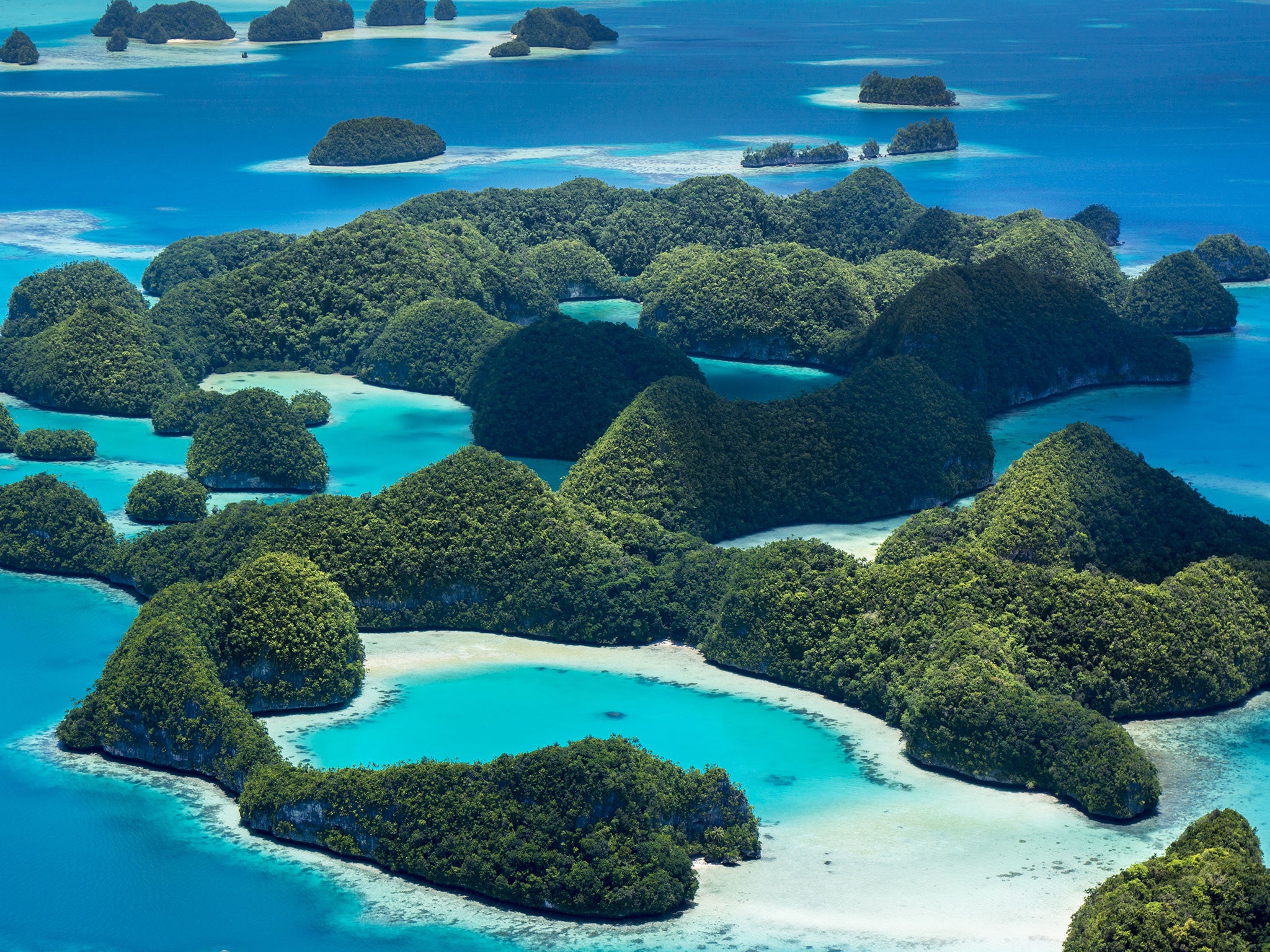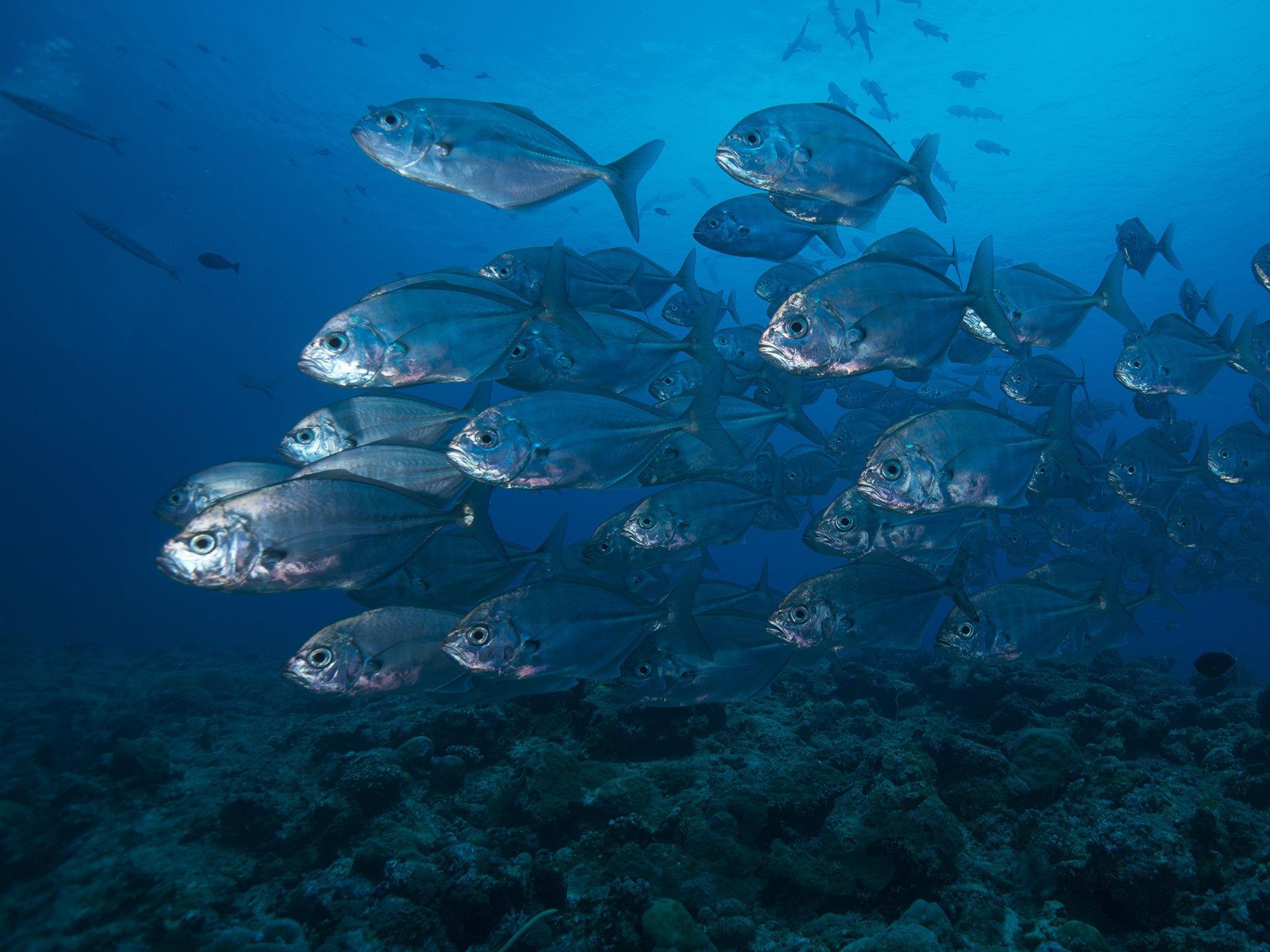Palau: Tiny Pacific island declares world's sixth largest marine reserve
Over 1 million square miles of sea have been protected over the course of 2015 so far

Your support helps us to tell the story
From reproductive rights to climate change to Big Tech, The Independent is on the ground when the story is developing. Whether it's investigating the financials of Elon Musk's pro-Trump PAC or producing our latest documentary, 'The A Word', which shines a light on the American women fighting for reproductive rights, we know how important it is to parse out the facts from the messaging.
At such a critical moment in US history, we need reporters on the ground. Your donation allows us to keep sending journalists to speak to both sides of the story.
The Independent is trusted by Americans across the entire political spectrum. And unlike many other quality news outlets, we choose not to lock Americans out of our reporting and analysis with paywalls. We believe quality journalism should be available to everyone, paid for by those who can afford it.
Your support makes all the difference.The Pacific island nation of Palau’s announced on Thursday that it is designating a 193,000-square-mile fully protected marine reserve that would be the sixth largest such area in the world and would help protect over a thousand species of fish and some 700 species of coral.
The news is even more momentous given that plans to set aside over 1 million square miles of highly protected ocean have now been announced in 2015 alone, more than during any prior year, according to figures provided by the Pew Charitable Trusts. That is an area bigger than Alaska and Texas combined.
“When you think about it from the perspective of the planet, the last 12 or 13 months, there’s been more of the planet protected than at any time in our history,” said Matt Rand, Pew’s Global Ocean Legacy project director.
Palau’s new reserve joins the single largest marine reserve ever dedicated — the Pitcairn Island Marine Reserve, at 332,000 square miles and dedicated by Britain earlier this year — as well as New Zealand’s Kermadec Ocean Sanctuary (239,000 square miles), and Chile’s Nazca-Desventuradas Marine Park (115,000 square miles) and proposed Easter Island reserve (244,000 square miles).
All were announced in 2015. The Easter Island reserve remains in a “proposed” status because, although proposed by Easter Island’s indigenous Rapa Nui people and recently announced by Chilean president Michelle Bachelet, it has not yet been finalized.

If you dip back further into 2014 and the months following the historic first Our Oceans conference in June of 2014, then Pew calculates that more than 1.5 million square miles of ocean have been fully protected, which is 62 percent of the total fully protected areas that exist.
Following the event, in September 2014, President Obama expanded the already existing Pacific Remote Islands National Marine Monument, greatly increasing the fully protected areas around Wake Atoll, Johnston Atoll, and Jarvis Island from some 87,000 square miles to over 490,000. Taken as a whole, the United States has designated more fully protected ocean area than any other country, according to Pew.
A fully protected marine reserve is the “gold standard” for ocean conversation, said Rand, and means that the areas are off limits to fishing, drilling, dumping and other uses.
In many ways, the flurry of new announcements marks the culmination of more than a decade of work by a handful of conservation groups, including Pew, National Geographic Society, the Marine Conservation Institute, Conservation International and Oceana — to put the most biologically-significant marine areas off limits to exploitation.
At the same time conservationists have been pushing for new ocean reserves, marine scientists have documented that fully protecting large areas can have spillover effects by boosting fish populations. Some fish travel outside these areas and can be caught, making these restrictions more politically-palatable to local residents.
National Geographic explorer in residence Enric Sala, author of the new book “Pristine Seas: Journeys to the Ocean’s Last Wild Places,” calls these regions “fish banks,” in which fishing operators can draw down the interest without depleting the capital.
According to a 2009 study published by a group of researchers at the University of California, Santa Barbara, Oregon State University and the National Marine Fisheries Service, no-take reserves on average produce four times as much fish and these fish are 25 percent larger. Larger fish produce many more offspring, which in turn migrate to neighboring areas where fishing can take place.
“There is clearly momentum. There is implicit peer pressure” among world leaders, Sala said in an interview Thursday. Now that there’s an annual global ocean conference, he added, “People don’t want to be the ones who didn’t announce anything.”
Some nations, such as Palau, see these reserves as a way to boost tourism. The protections ensure visitors can see some of the prized species remote islands are known for, and provide a branding opportunity in the same way UNESCO’s World Heritage sites have done for many countries.
Elliott Norse, founder and chief scientist of the Marine Conservation Institute, started championing the idea of a global competition among world leaders to designate marine reserves in 2004. In an interview, he said heads of states are now willing to act on researchers’ advice because “What the smartest most creative people had been saying, that protecting places in the ocean really works, is now demonstrable with such a high degree of certainty.”
The first world leader to respond to this lobbying effort was an unlikely target: George W. Bush, who designated the Northwestern Hawaiian Islands as a national monument in 2006. In 2008, shortly before leaving office, Bush put a large swath of the Pacific off limits to development when he declared three national marine monuments there.
Despite the recent flurry of designations, only 1.9 percent of the ocean is currently under the strictest protections. Many scientists and conservation groups advocate putting 30 percent of the ocean under full protection.
Advocates are pressing the leaders of several nations to put more of the sea off limits. Other potential reserves include Clipperton Island, an uninhabited island in the eastern Pacific Ocean under France’s control, and part of the area surrounding Ecuador’s Galapagos Islands. In the U.S., ocean activists have pushed the Obama administration to consider protecting a couple of zones in New England, including Cashes Ledge, and in the Arctic Ocean off Alaska.
The new announcement by Palau has several unique aspects to it: The country is protecting fully 80 percent of its waters, a remarkably high percentage. The remaining 20 percent will be a zone reserved only for local fishing and some other relatively small scale or non-industrial fishing.
Palau has also launched a number of other conservation initiatives including the world’s first shark sanctuary in 2009. For the island nation, protecting its natural resources makes a great deal of sense — tourism to the islands is one of the primary sources of economic revenue, especially for diving. And it has now added a protected area bigger than California.
Palua, located in the Western Pacific ocean off the Philippines, was formerly a “trust territory” of the United States — it became independent in 1994.
“The scale of protection on the oceans far exceeds what takes place on the land,” said Pew’s Rand. “These marine reserves are massive in size, and really, just a few of the marine reserves together is larger than our whole national parks system.”
Even with these recent designations, the task of protecting these areas remains unfinished. Some critics have questioned how countries will protect these large areas, given the fact that many nations lack the capacity to mount regular patrols. While most are remote, large fishing vessels with an economic incentive to extract their resources can still travel there, though some groups are working to monitor the vessels’ movements through satellite imagery.
Washington Post
Join our commenting forum
Join thought-provoking conversations, follow other Independent readers and see their replies
Comments